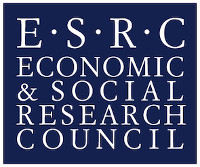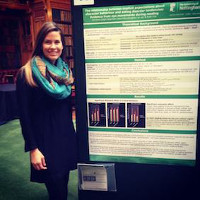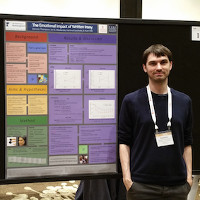Peer Reviewed Journal Articles
For pdfs see Academia.edu
Cutter, M. G., Paterson, K. B., & Filik, R. (in press). Eye-movements during reading and noisy-channel
inference making. Journal of Memory and Language.
Zhu, N., & Filik, R. (in press). The role of social status in sarcasm interpretation:
Evidence from the United Kingdom and China. Discourse Processes.
Taylor, H., Hand, C. J., Howman, H., & Filik, R. (in press). Autism, attachment, and alexithymia:
Investigating emoji comprehension. International Journal of Human-Computer Interaction.
Desai, S., & Filik, R. (in press). Literal vs. hyperbole: Examining speech preferences in testimonies
of victims of sexual crime. Psychology, Crime & Law.
Chen, Y., Yang, X., Howman, H., & Filik, R. (2024) Individual differences in emoji comprehension:
Gender, age, and culture. PLoS ONE 19: e0297379.
Çokal, D., Filik, R., Sturt, P., & Poesio, M. (2023). Anaphoric reference to mereological entities,
Discourse Processes, 60, 202-223.
Zhu, N., & Filik, R. (2023). Individual differences in sarcasm interpretation and use:
Evidence from the UK and China. Journal of Experimental Psychology: Learning, Memory, and Cognition, 49, 445-463.
Cutter, M. G., Paterson, K. B., & Filik, R. (2023). Syntactic prediction during self-paced reading
is age invariant. British Journal of Psychology, 114, 39-53.
Hand, C. J., Kennedy, A., Filik, R., Pitchford, M., & Robus, C. M. (2023). Emoji
identification and emoji effects on sentence emotionality in ASD-diagnosed adults and
neurotypical controls. Journal of Autism and Developmental Disorders, 53, 2514-2528.
Cutter, M. G., Filik, R., & Paterson, K. B. (2022). Do readers maintain word-level
uncertainty during reading? A pre-registered replication study. Journal of Memory and Language, 125, 104336.
Garcia, C., Țurcan, A., Howman, H., & Filik, R. (2022). Emoji as a tool to aid the
comprehension of written sarcasm: Evidence from younger and older adults. Computers in Human
Behavior, 126, 106971.
Cutter, M., Paterson, K. B., & Filik, R. (2022). No evidence of word-level uncertainty in
younger and older adults in self-paced reading. Quarterly Journal of Experimental Psychology,
75, 1085-1093.
Cutter, M., Paterson, K. B., & Filik, R. (2022). Online representations of non-canonical
sentences are more than good-enough. Quarterly Journal of Experimental Psychology, 75, 30-42.
Ralph-Nearman C., & Filik, R. (2021). An eye-tracking study examining the relationship
between males’ eating disorder symptomatology, body mass index, and expectations about character
behaviour in text. Cognition and Emotion, 35, 1543-1558.
Filik, R., Ingram, J., Moxey, L., & Leuthold, H. (2021). Irony as a test of the
Presupposition-Denial Account: An ERP study. Journal of Psycholinguistic Research, 50, 1321-1335.
Desai, S., McLean, J., Lawrence, C., & Filik, R. (2021). The impact of hyperbole on
perception of victim testimony. Journal of Pragmatics, 174, 143-156.
Thompson, D., Leuthold, H., & Filik, R. (2021). Examining the influence of perspective and
prosody on expected emotional responses to irony: Evidence from event-related brain potentials.
Canadian Journal of Experimental Psychology, 75, 107-113.
Țurcan, A., Howman, H., & Filik, R. (2020). Examining the role of context in written
sarcasm comprehension: Evidence from eye-tracking during reading. Journal of Experimental
Psychology: Learning, Memory, and Cognition, 46, 1966-1976.
Howman, H., & Filik, R. (2020). The role of emoticons in sarcasm comprehension in
younger and older adults: Evidence from an eye-tracking experiment. Quarterly Journal of
Experimental Psychology, 73, 1729-1744.
Ralph-Nearman, C., & Filik, R. (2020). Development and validation of new figural scales
for female body dissatisfaction assessment on two dimensions: Thin-ideal and muscularity-ideal.
BMC: Public Health, 20, 1114.
Robus, C. M., Hand, C. J., Filik, R., & Pitchford, M. (2020). Investigating effects of emoji
on neutral narrative text: Evidence from eye movements and perceived emotional valence.
Computers in Human Behavior, 109, 106361.
Ralph-Nearman, C., Yeh, H., Khalsa, S. S., Feusner, J. D., & Filik, R. (2020). What is the
relationship between body mass index and eating disorder symptomatology in professional female
fashion models? Psychiatry Research, 293, 113358.
Barzy, M., Filik, R., Williams, D., & Ferguson, H. J. (2020). Emotional processing of ironic
versus literal criticism in autistic and nonautistic adults: Evidence from eye-tracking. Autism
Research, 13, 563-578.
Ralph-Nearman, C., Achee, M., Lapidus, R., Stewart, J. L., & Filik, R. (2019). A systematic
and methodological review of attentional biases in eating disorders: Food, body, and perfectionism.
Brain and Behaviour, 9, e01458.
Filik, R., Țurcan, A., Ralph-Nearman, C., & Pitiot, A. (2019). What is the difference between
irony and sarcasm? An fMRI study. Cortex, 115, 112-122.
Kunkel, A., Filik, R., Mackenzie, I. G., & Leuthold, H. (2018). Task-dependent evaluative processing of
moral and emotional content during comprehension: An ERP study. Cognitive, Affective, & Behavioral
Neuroscience, 18, 389-409.
Ralph-Nearman, C., & Filik, R. (2018). Eating disorder symptomatology and body mass index are associated
with readers’ expectations about character behavior: Evidence from eye-tracking during reading.
International Journal of Eating Disorders, 51, 1070-1079.
Filik, R., Howman, H., Ralph-Nearman, C., & Giora, R. (2018). The role of defaultness and personality
factors in sarcasm interpretation: Evidence from eye-tracking during reading. Metaphor and Symbol, 33,
148-162.
Pickering, B., Thompson, D., & Filik, R. (2018). Examining the emotional impact of sarcasm using a
virtual environment. Metaphor and Symbol, 33, 185-197.
Wen, Y., Filik, R., & van Heuven, W. J. B. (2018). Electrophysiological dynamics of Chinese phonology
during visual word recognition in Chinese-English bilinguals. Scientific Reports, 8, 1-10.
Ralph-Nearman, C., & Filik, R. (2018). New body scales reveal body dissatisfaction, thin-ideal, and
muscularity-ideal in males. American Journal of Men’s Health, 12, 740-750.
Bohan, J., & Filik, R. (2018). Perspective effects during reading: Evidence from text change-detection.
Discourse Processes, 55, 113-122.
Filik, R., Brightman, E., Gathercole, C., & Leuthold, H. (2017). The emotional impact of verbal
irony: Eye-tracking evidence for a two-stage process. Journal of Memory and Language, 93,
193-202.
Thompson, D., Mackenzie, I. G., Leuthold, H., & Filik, R. (2016). Emotional responses to irony
and emoticons in written language: Evidence from EDA and facial EMG. Psychophysiology, 53,
1054–1062.
Thompson, D., & Filik, R. (2016). Sarcasm in written communication: Emoticons are efficient
markers of intention. Journal of Computer-mediated Communication, 21, 105–120.
Țurcan, A., & Filik, R. (2016). An eye-tracking investigation of written sarcasm comprehension:
The roles of familiarity and context. Journal of Experimental Psychology: Learning, Memory, and
Cognition, 42, 1867-1893.
Filik, R., Țurcan, A., Thompson, D., Harvey, N., Davies, H., & Turner, A. (2016). Sarcasm and
emoticons: Comprehension and emotional impact. Quarterly Journal of Experimental
Psychology, 69, 2130-2146.
Hall, S. S., Maltby, J., Filik, R., & Paterson, K. B. (2016). Keys skills for science learning: The
importance of text cohesion and reading ability. Educational Psychology, 36, 191-215.
Leuthold, H., Kunkel, A., Mackenzie, I. G., & Filik, R. (2015). Online processing of moral
transgressions: ERP evidence for spontaneous evaluation. Social Cognitive and Affective
Neuroscience, 10, 1021-1029.
Filik, R., Hunter, C. M., & Leuthold, H. (2015). When language gets emotional: Irony and the
embodiment of affect in discourse. Acta Psychologica, 156, 114-125.
Hall, S., Kowalski, R., Paterson, K. B., Basran, J., Filik, R., & Maltby, J. (2015). Local text
cohesion, reading ability and individual science aspirations: Key factors influencing
comprehension in science classes. British Educational Research Journal, 41, 122-142.
Filik, R., Leuthold, H., Wallington, K., & Page, J. (2014). Testing theories of irony processing
using eye-tracking and ERPs. Journal of Experimental Psychology: Learning, Memory, and
Cognition, 40, 811-828.
Hall, S., Basran, J., Paterson, K. B., Kowalski, R., Filik, R., & Maltby, J. (2014). Individual
differences in the effectiveness of text cohesion for science text comprehension. Learning and
Individual Differences, 29, 74-80.
Sauermann, A., Filik, R., & Paterson, K. B. (2013). Processing contextual cues to focus:
Evidence from eye movements in reading. Language and Cognitive Processes, 28, 875-903.
Filik, R., & Leuthold, H. (2013). The role of character-based knowledge in online narrative
comprehension: Evidence from eye movements and ERPs. Brain Research, 1506, 94-104.
Leuthold, H., Filik, R., Murphy, K., & Mackenzie, I. G., (2012). The on-line processing of
socioemotional information in prototypical scenarios: Inferences from brain potentials. Social
Cognitive and Affective Neuroscience, 7, 457-466.
Filik, R., Leuthold, H., Moxey, L. M., & Sanford, A. J., (2011). Anaphoric reference to quantified
antecedents: An event-related brain potential study. Neuropsychologia, 49, 3786-3794.
Filik, R., & Barber, E., (2011). Inner speech during silent reading reflects the reader's regional
accent. PLOS ONE, 6, e25782.
Darker, I. T, Gerrett, D., Filik, R, Purdy, K. J., & Gale, A. G., (2011). The influence of 'Tall Man'
lettering on errors of visual perception in the recognition of written drug names. Ergonomics,
54, 21-33.
Moxey, L. M., & Filik, R. (2010). The effects of character desire on focus patterns and
pronominal reference following quantified statements. Discourse Processes, 47, 588-616.
Filik, R., & Moxey, L. M. (2010). The on-line processing of written irony. Cognition, 116, 421-
436.
Filik, R., Price, J., Darker, I. T., Gerrett, D. G., Purdy, K. J., & Gale, A. G. (2010). The influence
of Tall Man lettering on drug name confusion: A laboratory-based investigation in the UK using
younger and older adults and healthcare practitioners. Drug Safety, 33, 1-11.
Paterson, K. B., Filik, R., & Moxey. L. M. (2009). Quantifiers and discourse processing.
Language and Linguistics Compass, 3, 1390-1402.
Filik, R., Paterson, K. B., & Liversedge, S. P. (2009). The influence of 'only' and 'even' on on-line
semantic interpretation. Psychonomic Bulletin & Review, 16, 678-683.
Moxey, L. M., Filik, R., & Paterson K. B. (2009). On-line effects of what is expected on the
resolution of plural pronouns. Language and Cognitive Processes, 24, 843-875.
Filik, R., Sanford, A. J. & Leuthold, H. (2008). Processing pronouns without antecedents:
Evidence from event-related brain potentials. Journal of Cognitive Neuroscience, 20,
1315-1326.
Filik, R. (2008). Contextual override of pragmatic anomalies: Evidence from eye movements.
Cognition, 106, 1038-1046.
Sanford, A. J., Filik, R., Emmott, C., & Morrow, L. (2008). They’re digging up the road again:
The processing cost of “Institutional They”. Quarterly Journal of Experimental Psychology, 61,
372-380.
Paterson, K. B., Filik, R., & Liversedge, S. P. (2008). Competition during the processing of
quantifier scope ambiguities. Quarterly Journal of Experimental Psychology, 61, 459-473.
Filik, R., & Sanford, A. J. (2008). When is cataphoric reference recognised? Cognition, 107,
1112-1121.
Paterson, K. B., Liversedge, S. P., Filik, R., Juhasz, B., White, S., & Rayner, K. (2007).
Processing contrastive focus during silent reading: Evidence from eye movements. Quarterly
Journal of Experimental Psychology, 60, 1423-1445.
Sanford, A. J., & Filik, R. (2007). “They” as a gender-unspecified singular pronoun: Eyetracking
reveals a processing cost. Quarterly Journal of Experimental Psychology, 60, 171-178.
Filik, R., Purdy, K. J., Gale, A. G., & Gerrett, D. (2006). Labelling of medicines and patient
safety: Evaluating methods of reducing drug name confusion. Human Factors, 48, 39-47.
Poesio, M., Sturt, P. Artstein, R., & Filik, R. (2006). Underspecification and anaphora:
Theoretical issues and preliminary evidence. Discourse Processes, 42, 157-175.
Paterson, K. B., Liversedge, S. P., White, D., Filik, R., & Jaz, K. (2006). Children’s interpretation
of ambiguous focus in sentences with ‘only’. Language Acquisition, 13, 253-284.
Filik, R., Paterson, K. B., & Liversedge, S. P. (2005). Parsing with focus particles in context:
Eye movements during the processing of relative clause ambiguities. Journal of Memory and
Language, 53, 473-495.
Sanford, A. J. S., Sanford, A. J., Filik, R., & Molle, J. (2005). Depth of lexical-semantic
processing and sentential load. Journal of Memory and Language, 53, 378-396.
Filik, R., Paterson, K. B., & Liversedge, S. P. (2004). Processing doubly quantified sentences:
Evidence from eye movements. Psychonomic Bulletin and Review, 11, 953-959.
Filik, R., Purdy, K. J., Gale, A. G., & Gerrett, D. (2004). Drug name confusion: Evaluating the
effectiveness of capital (“Tall Man”) letters using eye movement data. Social Science and
Medicine, 59, 2597-2601.
Paterson, K. B., Liversedge, S. P., Rowland, C., & Filik, R. (2003). Children’s comprehension of
sentences with focus particles. Cognition, 89, 263-294.














